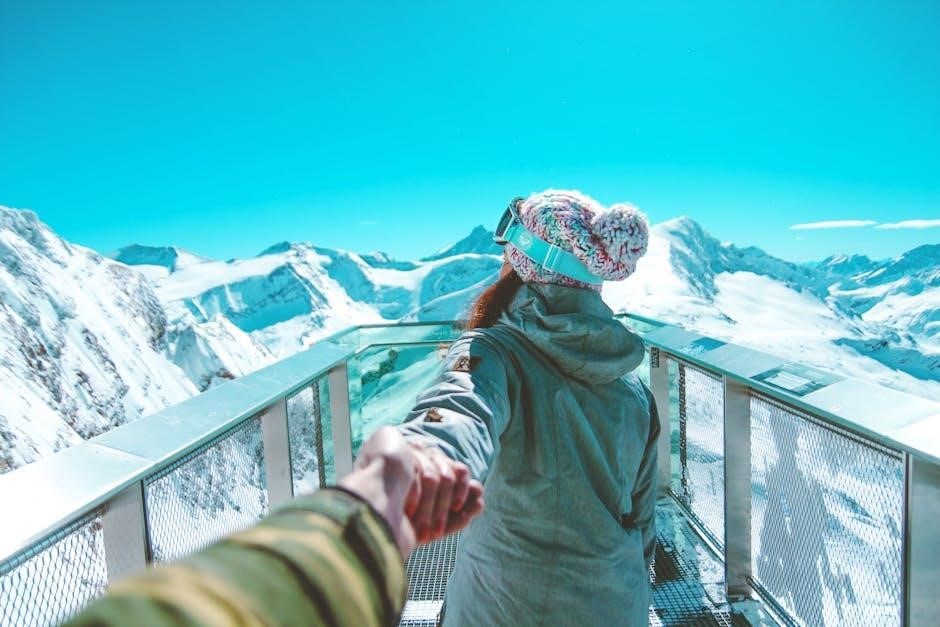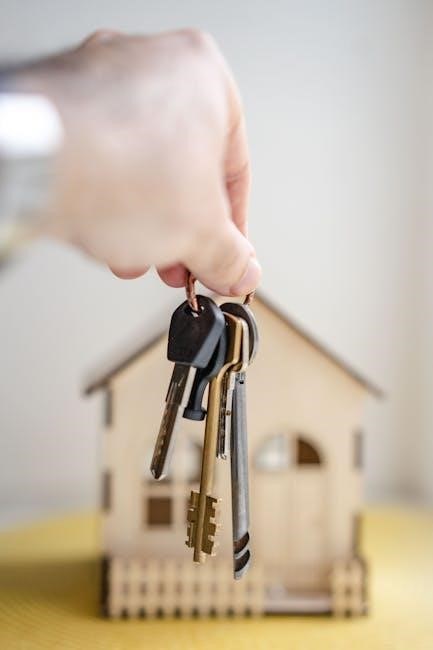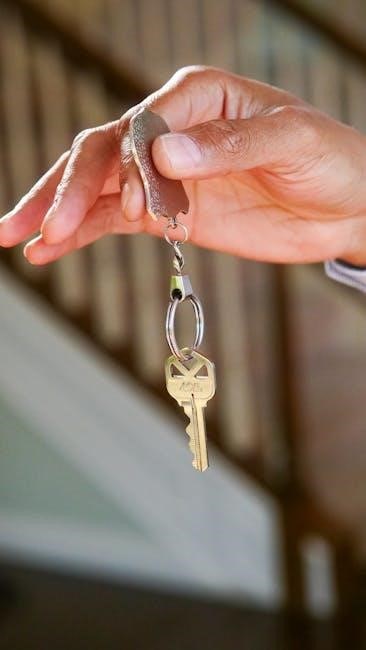Choosing the right snowboard is crucial for optimal performance and enjoyment on the slopes. This guide helps you navigate the complexities of selecting the perfect board.
From size and shape to flex and construction, understanding key factors ensures a tailored fit for your riding style and skill level. Mastering search techniques can help you find the best options efficiently.
Whether you’re a beginner or an advanced rider, this guide provides essential insights to make an informed decision and enhance your snowboarding experience.
1.1 Understanding the Importance of Choosing the Right Snowboard
Choosing the right snowboard is essential for maximizing performance, comfort, and overall enjoyment on the slopes. A well-suited board enhances your ability to control and maneuver, making every ride more enjoyable. Conversely, a poorly fitting snowboard can lead to frustration, fatigue, and even increased risk of injury. By understanding your riding style, skill level, and preferences, you can select a snowboard that aligns with your needs, ensuring a more rewarding experience. This guide will help you make an informed decision tailored to your unique requirements.
1.2 Brief Overview of Snowboard Types and Categories
Snowboards are categorized into three main types: All Mountain, Freeride, and Freestyle. All Mountain boards are versatile, suitable for various terrain and riding styles. Freeride boards are designed for backcountry adventures, offering stability in deep snow. Freestyle boards are ideal for park and trick riding, emphasizing maneuverability and playfulness. Each category is tailored to specific riding preferences, ensuring riders can choose a board that matches their skills and aspirations. Understanding these categories is the first step in finding the perfect snowboard for your needs.
Snowboard Categories
Snowboards are categorized into All Mountain, Freeride, and Freestyle, each designed for specific riding styles and terrains, ensuring a perfect match for every rider’s needs.
2.1 All Mountain Snowboards
All Mountain snowboards are designed for versatility, catering to riders who explore various terrains, from groomed trails to backcountry. These boards are ideal for all conditions.
They offer a balanced blend of stability, maneuverability, and float, making them suitable for both beginners and advanced riders. Their adaptability ensures a seamless experience across different snowboarding styles.
Whether you’re carving through powder or cruising down groomers, All Mountain snowboards deliver consistent performance, making them a popular choice for riders seeking a well-rounded experience.
2.2 Freeride Snowboards
Freeride snowboards are designed for adventurous riders who seek thrilling off-trail experiences. These boards excel in deep powder and challenging backcountry terrain.
Featuring a directional shape and a stiffer flex, Freeride snowboards provide exceptional stability at high speeds and superior float in deep snow. Their longer nose and shorter tail enhance performance in untouched landscapes.
Whether you’re navigating steep descents or exploring remote areas, Freeride snowboards deliver the precision and confidence needed for unforgettable backcountry adventures.
2.3 Freestyle Snowboards
Freestyle snowboards are ideal for riders who thrive in the park and enjoy performing tricks. These boards are designed for agility and precision, featuring a true twin shape.
Their softer flex allows for effortless maneuvers, such as rail tricks and jumps, while the symmetric design enables smooth switch riding. Perfect for creative expression, freestyle snowboards are a must for those who love the thrill of the park.
Whether you’re a seasoned pro or an aspiring shredder, freestyle snowboards offer the versatility and playfulness needed to master new skills and push your limits.

Snowboard Size and Fit
Proper snowboard size and fit are essential for optimal performance and comfort. Key factors include length, waist width, and boot compatibility to ensure a seamless riding experience.
3.1 How to Determine the Right Snowboard Length
Snowboard length is crucial for optimal performance and control. Generally, boards range from 140 to 160 cm for adults, depending on height, weight, and riding style. Taller or heavier riders may prefer longer boards for stability, while shorter or lighter riders benefit from shorter lengths for easier maneuverability. Freestyle riders often opt for shorter boards for better agility in tricks, while all-mountain riders may choose slightly longer boards for versatility. Personal preference and specific riding needs should guide the final decision to ensure the best fit and performance.
3.2 Understanding Waist Width and Boot Compatibility
Waist width refers to the snowboard’s narrowest point and is critical for proper boot fit. A board too narrow may cause boots to hang over, leading to poor edge control and drag. Conversely, a board too wide can feel cumbersome. Boot size and snowboard waist width must align for optimal performance and comfort. Riders with larger boots may need a wider board, while smaller boots work best with narrower widths. Proper compatibility ensures better edge response, easier turning, and a more enjoyable riding experience overall.

Shape and Profile
Shape and profile significantly impact performance. Directional boards excel in all-mountain riding, while true twin designs are ideal for freestyle. Camber and rocker profiles also play a crucial role in responsiveness and float.
4.1 Directional vs. True Twin Shapes
Directional snowboards are designed for optimal performance in one direction, offering better float in powder and enhanced edge hold. They feature a longer nose and shorter tail, making them ideal for all-mountain and freeride riding.
True Twin shapes are symmetrical, allowing for effortless switching between forward and backward riding. This makes them perfect for freestyle and park riding, where versatility and precision are key. Understanding these differences is crucial for selecting a board that matches your riding style and preferences.
4.2 Camber vs. Rocker: Pros and Cons
Camber snowboards offer superior edge hold and pop, making them ideal for high-speed carving and freestyle jumps. However, they can feel stiffer and less forgiving in powder.
Rocker snowboards excel in powder, providing effortless float and a more forgiving ride. They are great for beginners and freeride enthusiasts but may lack the precision of camber on hardpack.
Choosing between them depends on your riding style, terrain preferences, and skill level, ensuring the best performance for your snowboarding adventures.

Flex and Performance
Flex ratings determine a snowboard’s responsiveness and control. Higher flex offers precision for advanced riders, while lower flex provides forgiveness and ease for beginners.
5.1 Understanding Flex Ratings
Flex ratings, typically ranging from 1 to 10, indicate a snowboard’s stiffness and responsiveness. A lower rating (1-3) offers a softer, more forgiving ride, ideal for beginners or freestyle riding. Medium flex (4-6) balances stability and maneuverability, suiting all-mountain riders. Higher ratings (7-10) provide rigidity for precision and control, preferred by advanced riders and freeriders. Understanding your riding style and preferences helps in selecting the right flex for optimal performance and comfort on the slopes.
5.2 How Flex Affects Different Riding Styles
Snowboard flex significantly impacts performance across various riding styles. Softer flex boards (1-3) excel in freestyle and park riding, offering forgiveness and ease for tricks. Medium flex (4-6) is versatile, ideal for all-mountain riding, blending stability and maneuverability. Stiffer boards (7-10) are best for freeride and powder, delivering precision and control at high speeds. Understanding how flex aligns with your riding style ensures a more enjoyable and responsive experience on the mountain.

Construction and Materials
Snowboard construction involves core materials like wood or foam, affecting durability and performance. Base types, such as extruded or sintered, impact speed and maintenance needs.
Edge technology enhances durability and grip, while laminates improve responsiveness. Understanding these elements helps in selecting a board that suits your riding style and preferences.
6.1 Core Materials and Their Impact on Performance
The core of a snowboard is its foundation, influencing flex, durability, and responsiveness. Common materials include wood, foam, and composite blends, each offering unique performance characteristics.
Wood cores are durable and provide excellent pop, while foam cores are lighter but less responsive. Composite materials strike a balance, offering both strength and maneuverability. Choosing the right core material ensures optimal performance for your riding style.
6.2 Base Types: Extruded vs. Sintered
Snowboard bases are categorized into two main types: extruded and sintered. Extruded bases are durable, easy to maintain, and cost-effective, making them ideal for casual riders. Sintered bases, while more expensive, offer superior glide, durability, and performance in cold conditions. Extruded bases are less porous, requiring less waxing, while sintered bases absorb wax better, enhancing speed and longevity. The choice depends on your riding style, budget, and how often you wax your board.
6.3 Edge Technology and Durability
Snowboard edge technology plays a crucial role in performance and longevity. Most boards feature steel edges, which provide durability and grip on icy surfaces. Advanced technologies, such as Magne-Traction, enhance edge hold by adding small bumps along the edge. Proper edge maintenance, including sharpening and detuning, is essential to ensure optimal performance and prevent damage. Durable edges resist wear and tear, while high-quality construction ensures consistent control and responsiveness. Regular tuning and waxing further extend the life of the edges, maintaining their effectiveness season after season.
Bindings and Compatibility
Bindings are essential for control and performance, with options like strap-in and step-on styles. Ensuring compatibility between bindings and your snowboard is crucial for optimal functionality and safety.
7.1 Types of Bindings: Strap-In vs. Step-On
Strap-in bindings offer customizable fit and support, ideal for all-mountain and freeride riding. Step-on bindings provide quick entry and exit, appealing to freestyle and casual riders. Both types prioritize control and ease, catering to different preferences and riding styles. Choosing the right binding type enhances your snowboarding experience by ensuring comfort and responsiveness on the mountain.
7.2 Ensuring Binding Compatibility with Your Snowboard
Compatibility between bindings and snowboard is critical for optimal performance and safety; Most bindings follow standard mounting systems, but ensure yours matches your board’s pattern. Check manufacturer guidelines or compatibility charts to confirm fitment. Some bindings may require specific hardware or adjustments for proper installation. Testing bindings on your snowboard before purchase can help verify compatibility and ensure a seamless setup for your riding experience.

Boots and Sizing
Proper boot fit is essential for comfort, control, and performance. Ensure boots match your binding size and riding style, with adequate flex for responsiveness and support.
8.1 How to Choose the Right Boot Size and Fit
Choosing the right snowboard boot size and fit is crucial for comfort and performance. Try boots in the afternoon, as feet swell throughout the day. Wear thin, moisture-wicking socks to ensure proper fit. Check the boot’s liner and shell for a snug yet comfortable feel. Your toes should lightly touch the end of the boot, and your heel should stay secure. Avoid boots that are too tight or too loose, as this can cause discomfort or affect control. Walk around the store to ensure the boots feel natural and supportive. Proper fit ensures better responsiveness and reduces fatigue on the slopes.
- Your toes should touch the boot’s end but not feel cramped.
- Your heel should stay in place without slipping.
- The boot should feel snug but not overly tight.
Consult a professional fitter for the best results.
8.2 Flex and Comfort in Snowboard Boots
Flex and comfort are vital for optimal snowboarding performance. Boots with the right flex match your riding style, while proper comfort ensures all-day wearability. Softer flex boots suit beginners, offering ease of movement, while stiffer boots provide advanced riders with better control. Look for boots with cushioned insoles, breathable liners, and adjustable features like Boa closures for a customized fit. Heat-moldable liners can enhance comfort by conforming to your foot shape. Prioritize boots that balance support and flexibility, ensuring a responsive yet comfortable ride.
- Choose a flex that aligns with your skill level and riding style.
- Opt for boots with breathable, moisture-wicking materials.
- Consider heat-moldable liners for a personalized fit.
Proper fit and flex ensure better control and reduced fatigue on the mountain.

Additional Gear and Accessories
Additional gear enhances your snowboarding experience. Goggles provide clear vision, helmets ensure safety, and proper clothing keeps you warm and dry. Accessories like gloves and socks improve comfort and performance for a better ride.
- Goggles
- Helmets
- Clothing
- Socks
- Gloves
9.1 The Importance of Proper Snowboarding Socks
Proper snowboarding socks are essential for comfort, warmth, and performance. They wick moisture, preventing blisters and cold feet. Look for materials like merino wool or synthetic blends that offer breathability and insulation. A snug fit ensures reduced bunching, while cushioning in high-impact areas like the shin and toes enhances comfort. Avoid thick, bulky socks that restrict movement or cause boot pressure. Investing in high-quality snowboarding socks can significantly improve your overall riding experience and keep you comfortable all day long on the slopes.
- Moisture-wicking materials
- Proper fit to avoid bunching
- Cushioning for impact zones
- Breathability and insulation
9.2 Snowboard Clothing: Jackets, Pants, and Base Layers
Snowboard clothing is designed to keep you warm, dry, and comfortable on the mountain. Jackets and pants should be waterproof and breathable, with features like adjustable hems and cuffs to prevent snow entry. Base layers are essential for temperature regulation, with moisture-wicking fabrics like merino wool or synthetic materials. Insulated jackets and snowboard-specific pants with reinforced seams offer durability. Choose clothing that fits well, allowing freedom of movement while maintaining warmth. Proper snowboarding attire ensures a better experience, protecting you from harsh weather conditions.
- Waterproof and breathable outerwear
- Moisture-wicking base layers
- Adjustable features for a secure fit
- Durable construction for longevity
9.3 Goggles and Helmets: Safety Essentials
Goggles and helmets are vital for snowboarding safety, protecting you from impact, snow, and harsh weather. Goggles provide UV protection, reduce glare, and prevent snow from obstructing your vision. Look for anti-fog coating and good ventilation to maintain clarity. Helmets are essential for head protection, absorbing impact in falls or collisions. Ensure a snug, comfortable fit and look for certifications like ASTM or Snell. Proper safety gear boosts confidence and ensures a safer, more enjoyable snowboarding experience.
- UV protection and anti-fog features in goggles
- Impact-absorbing helmets with certification
- Secure fit for both goggles and helmets
- Enhanced visibility and weather protection
Budget and Cost Considerations
Set a realistic budget for your snowboard setup, balancing quality and price. Consider costs for the board, bindings, boots, and safety gear to avoid overspending.
10.1 Setting a Budget for Your Snowboard Setup
Setting a budget is essential to avoid overspending while ensuring you get quality gear. Snowboard setups can range from $500 to $1,500, depending on the components and brands.
Consider allocating funds for the snowboard, bindings, boots, and safety gear like helmets and goggles. Sales during spring and fall offer great opportunities to save on last season’s models.
Establishing a clear budget helps narrow down options and focus on what matters most—whether it’s durability, performance, or style. Prioritize your needs to make the most of your investment.
10.2 Balancing Quality and Price
Balancing quality and price is key to a smart purchase. High-end snowboards offer superior performance and durability but may not be necessary for casual riders.
Mid-range options often provide excellent value, combining good performance with affordable prices. Entry-level boards are ideal for beginners, offering decent quality at lower costs.
Research and compare features to ensure you’re getting the best value for your money. Sales and demo models can help you acquire higher-quality gear without exceeding your budget.

Where to Buy
Local snowboard shops offer personalized advice and fitting, while online retailers provide convenience and a wide selection. Consider both options to find the best fit for your needs.
Local shops ensure proper sizing and expert recommendations, while online platforms often feature competitive pricing and customer reviews to guide your decision.
11.1 Local Snowboard Shops vs. Online Retailers
Local snowboard shops provide personalized service, expert advice, and hands-on experience with the equipment. You can try out gear and get tailored recommendations from knowledgeable staff.
Online retailers, on the other hand, offer convenience, a wide selection, and competitive pricing. They often feature customer reviews and detailed product descriptions to help you make informed decisions.
Consider your priorities: local shops excel for fittings and immediate feedback, while online options are ideal for comparing prices and shopping from home. Both have unique benefits to enhance your purchasing experience.
11.2 Tips for Buying Used or Demo Snowboards
When purchasing a used or demo snowboard, inspect the condition thoroughly. Check for base damage, edge wear, and delamination. Ensure bindings are functional and compatible with your boots.
Test the board if possible to gauge its performance and feel. Look for deals at local shops, online marketplaces, or ski resorts. Prices often drop during seasonal sales, making it a great time to buy quality gear at a lower cost.
When to Buy
The best times to purchase snowboard gear are during spring (late March/early April) and fall (September/October). Retailers often offer discounts to clear out inventory, making it ideal for buying quality equipment at lower prices.
12.1 Best Times of the Year to Purchase Snowboard Gear
The optimal times to buy snowboard gear are during the spring (late March/early April) and fall (September/October). These periods offer significant discounts as retailers clearance out old inventory to make room for new stock. Spring sales provide excellent deals on current-season equipment, while fall pre-season sales allow you to grab next year’s models at reduced prices. Additionally, many retailers offer holiday promotions and end-of-season clearance events, making these windows ideal for scoring high-quality gear at lower prices.
12.2 Taking Advantage of Sales and Discounts
To maximize savings, keep an eye out for seasonal promotions, holiday sales, and clearance events. Many retailers offer discounts during holiday weekends and end-of-season periods. Additionally, consider using price comparison tools and signing up for newsletters to stay informed about upcoming deals. Price alerts can notify you when your desired gear drops in price. Some retailers also offer bundle deals on snowboards, bindings, and boots, which can provide significant cost savings. Always verify the quality and compatibility of discounted items to ensure they meet your needs.

Maintenance and Care
Regular maintenance extends your snowboard’s lifespan. Clean the base, wax it, and check edges. Proper storage prevents damage, ensuring optimal performance for future rides.
13.1 How to Properly Store Your Snowboard
Proper storage is essential for maintaining your snowboard’s condition. Clean the base thoroughly and dry it to prevent rust or damage. Apply a thin layer of wax to protect the base during off-season. Store the board in a cool, dry place, away from direct sunlight, to avoid warping or delamination. Avoid leaning it against sharp objects or applying pressure that could bend the board. Use a snowboard bag or soft cover for added protection. Keeping it in a consistent environment ensures it remains ready for your next adventure.
13.2 Waxing and Tuning Your Snowboard
Regular waxing and tuning are vital for maintaining your snowboard’s performance. Waxing hydrates the base, improves glide, and protects it from damage. Apply a high-quality snowboard wax and let it cool before scraping off excess. Sharpen the edges for better control, especially in icy conditions, and use a detuning tool to smooth the tips and tails. Check the base for damage and repair any scratches or delamination promptly. Proper tuning ensures your snowboard rides smoothly and responds well to your movements, enhancing your overall experience on the mountain.

Demo Days and Rentals
Demo days allow you to test different snowboards before purchasing, ensuring the best fit for your style. Rentals offer flexibility, letting you try various setups without commitment.
14.1 Benefits of Trying Before You Buy
Demo days and rentals provide invaluable opportunities to test snowboards firsthand, ensuring compatibility with your riding style and preferences. By trying before buying, you can assess performance, comfort, and handling on real terrain, reducing the risk of purchasing a board that doesn’t meet your needs. This hands-on experience allows you to compare different models, making an informed decision. It also helps identify any potential issues, such as sizing or flex, that might not be apparent in a store. Ultimately, it enhances your overall satisfaction and enjoyment on the slopes.
14.2 How Demo Days Can Help You Choose the Right Board
Demo days offer a unique chance to test multiple snowboard models in real conditions, helping you identify the best fit for your riding style. By comparing performance, flex, and handling firsthand, you can make informed decisions. Experts are often on hand to provide personalized recommendations, ensuring you find a board tailored to your needs. This hands-on experience eliminates guesswork, allowing you to confidently select the perfect snowboard for your skill level and preferences, enhancing your overall snowboarding experience.